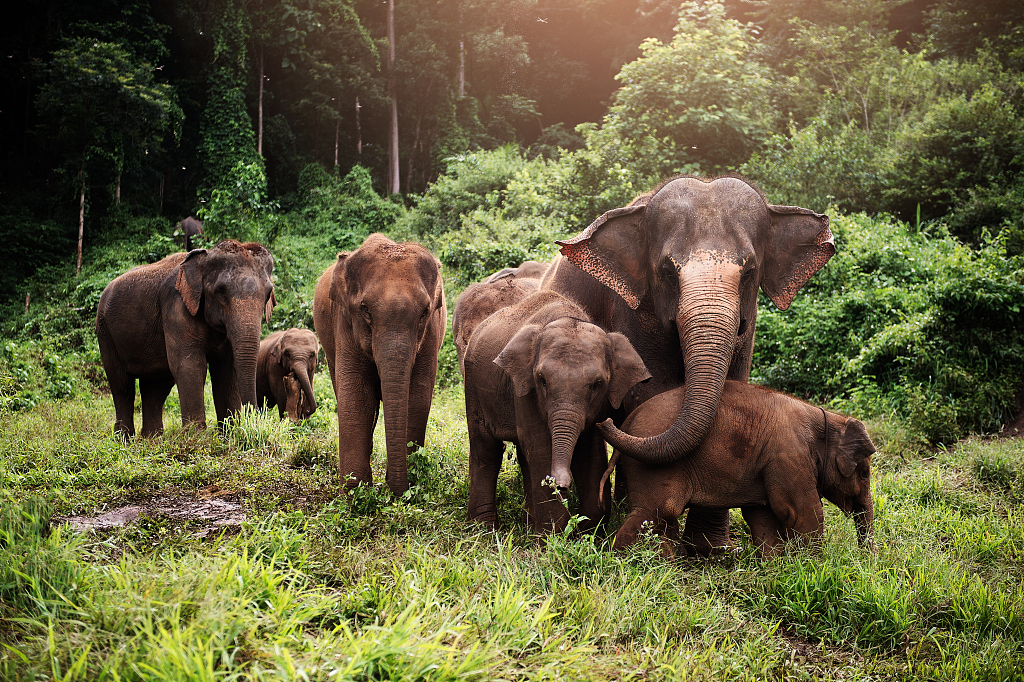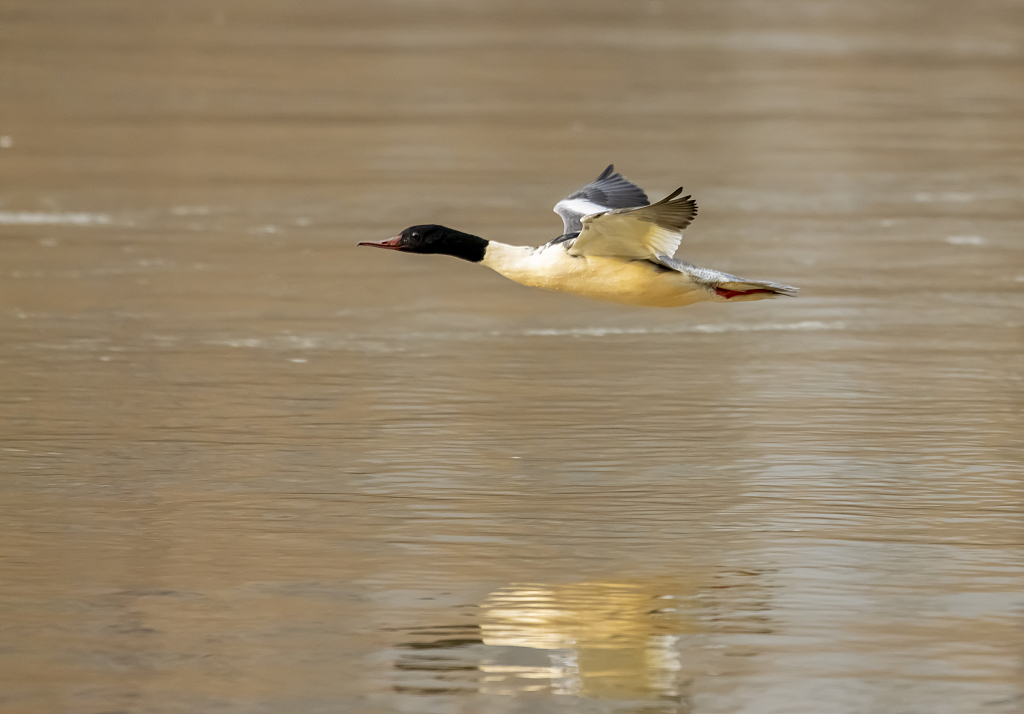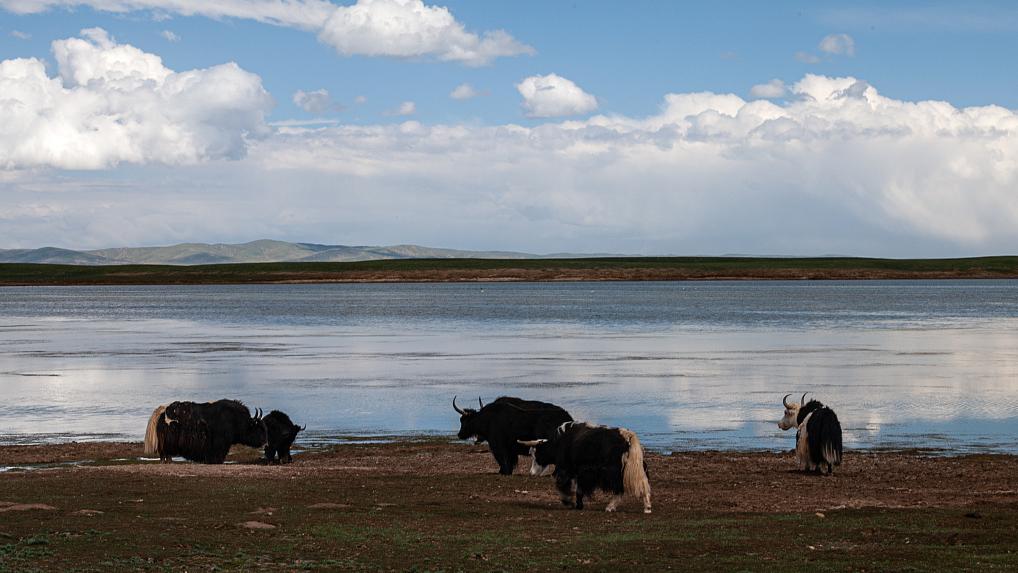For the past few years, China has launched endangered species rescue projects, which help protect 90 percent of typical terrestrial ecosystems, leading to a steady increase in the number of wild populations, such as the golden snub-nosed monkey, golden takin, Asian elephant, Chinese merganser, crested ibis, among many others.
Yunnan snub-nosed monkey
The Yunnan snub-nosed monkey national nature reserve in Xizang's Markam County has seen population growth of the endangered primate. It is the second national nature reserve of the Yunnan snub-nosed monkeys in China.
The birth rate of the Yunnan snub-nosed monkey is low because females give birth once every three years. The species mainly distribute in evergreen coniferous forests at elevations of 3,000-4,500 meters. They live at the highest altitude of any non-human primate.
This monkey with crimson lips is a highland star
Golden takin
The golden takin is an endangered goat-antelope, native to the Qinling Mountains. According to the research by Northwest Agriculture and Forestry University in 2021, the average number of golden takin in Niubeiliang National Nature Reserve was 319, and the increase in their numbers is gradually happening.
The Golden Takin
Asian elephant

Bao Hong, 24, is an elephant keeper at the Asian Elephant Breeding and Rescue Center in Yunnan’s Xishuangbanna Dai Autonomous Prefecture.
Established in 2008, the center serves as a haven for injured or orphaned wild elephants. Bao began this career with a curious fascination for these giant mammals. But it turns out far more challenging than he expected.
"We need to walk two to three kilometers on average everyday. The forests are filled with mosquitoes and snakes, and we often encounter wild elephants. And due to the elephants' substantial appetite, two keepers work overnight to ensure they are fed," he said.
Bao believes that through collaborative efforts of people from different walks of life, the Asian elephant population in China will thrive, fostering its harmonious coexistence with humans.
Learning to swim can save your life
Tracks in the rainforest
Family always have your back!
Chinese merganser

Listed as Endangered by the International Union for Conservation of Nature (IUCN) Red List of Threatened Species, the Chinese merganser is under first-class state protection in China. The Chinese merganser is also known as the scaly-sided merganser and is a migratory bird that breeds in the north and winters in the south. It can be found in forests of China, Russia, and the Korean Peninsula.
In the Changbai Mountains, the staff customized artificial nests for the Chinese merganser. By installing infrared cameras, the conservation patrol team continuously track and recorded the population size and spatial distribution of the Chinese merganser.
The Chinese Merganser
Crested ibis

The crested ibis were thought to be extinct in the wild until the discovery of seven wild crested ibises on May 23, 1981, in Yangxian of Shaanxi Province.
Shortly after this exciting discovery, a special group was set up by the local forestry department to protect the bird. From 1993 to 2003, 13 protected areas were built in Shaanxi, Beijing and other places.
According to National Forestry and Grassland Administration in 2022, the number of crested ibis has expanded from seven in 1981 to more than 9,000 today.
The incubation
Becoming parents

China has also initiated a system of nature reserves, with national parks as the mainstay, such as the establishment of the first batch of national parks like the Sanjiangyuan National Park, Giant Panda National Park, Northeast China Tiger and so on, with a protected area of 230,000 square kilometers covering nearly 30 percent of the wildlife land area.
China has continued to strengthen the rescue and protection of rare and endangered wild animals and plants and their habitats, with the protection rate increasing to 74 percent and biodiversity becoming richer.
(All images via VCG)
(If you have specific expertise and want to contribute, or if you have a topic of interest that you'd like to share with us, please email us at nature@cgtn.com.)